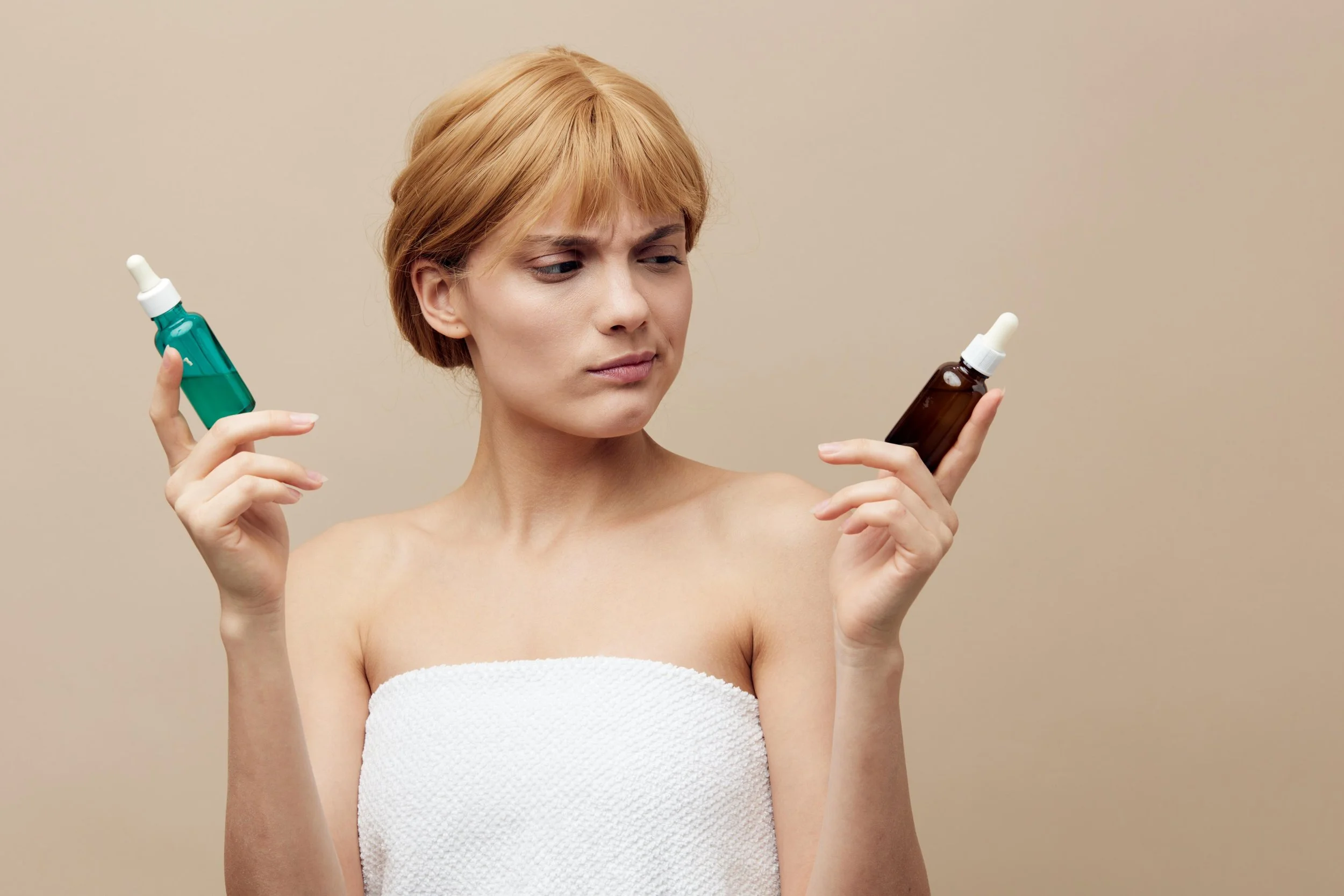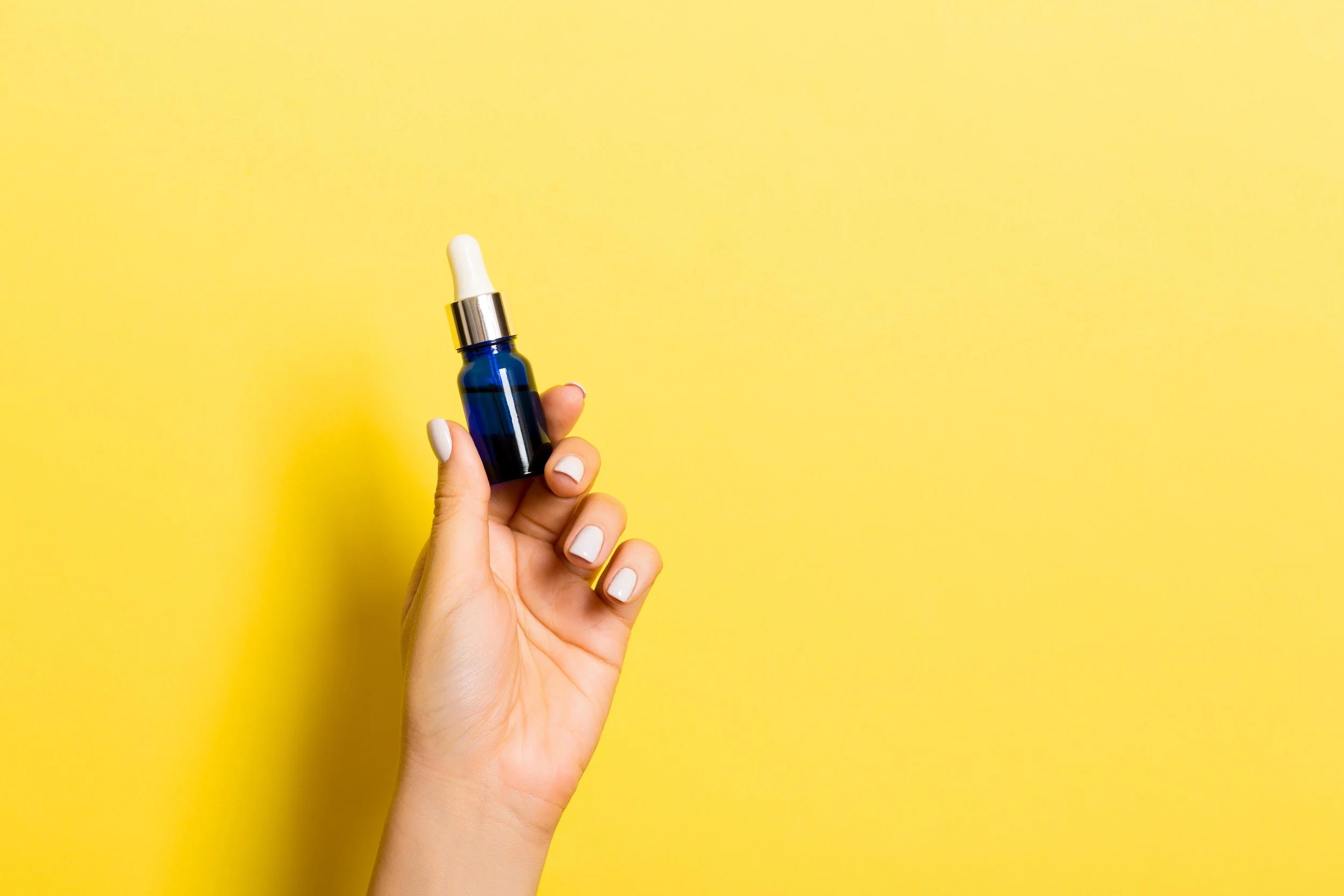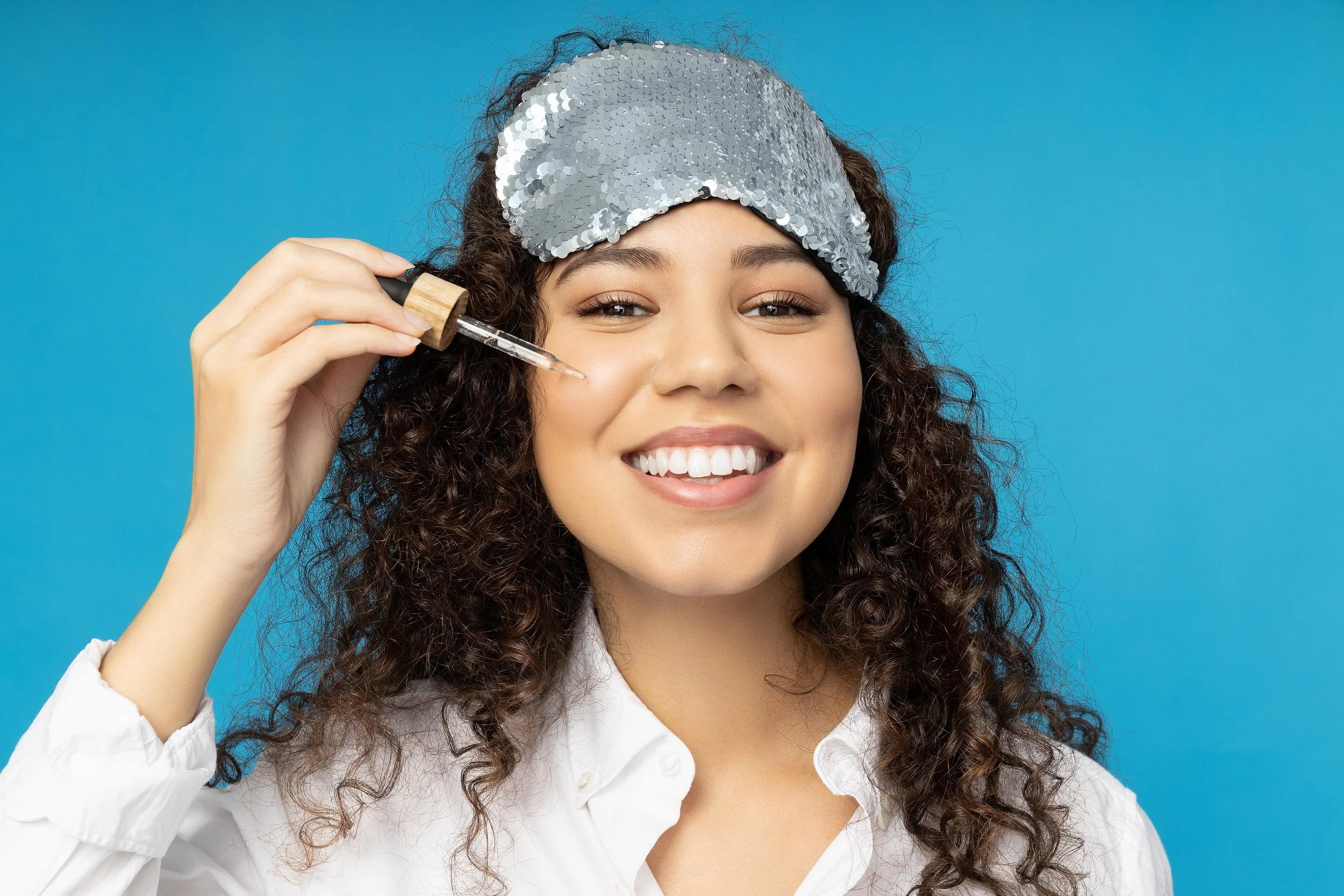Best Affordable Serums for Acne-Prone Skin (That Actually Work)
This post contains affiliate links. As an Amazon Associate, I earn from qualifying purchases—at no extra cost to you. I only recommend products I truly believe in.
Why Finding the Right Serum Matters for Acne
If you’ve ever typed “best serum for acne” into Google, you know the chaos that follows: 743 influencer lists, three TikTok miracle cures, and about five products that claim to fix everything overnight. (Spoiler: they won’t.)
Here’s the truth your skin actually needs: acne is a complex skin condition with four major drivers — excess oil, clogged pores, inflammation, and bacteria. So if your serum isn’t tackling at least one of those scientifically proven pathways? You’re just layering on expensive goo and hoping for the best.
But the good news? You can build a glow-boosting, breakout-busting serum routine — without draining your bank account or wrecking your skin barrier. Today we’re diving into affordable serums with peer-reviewed, research-backed ingredients that dermatologists (and this PhD nerd 👋) actually trust for acne-prone skin.
Ready to clear things up? Let’s go. 🚀
The Science of Serums for Acne-Prone Skin
So—do you really need a serum if you’ve already got a cleanser, spot treatment, and moisturizer?
Short answer: yep. And here’s why.
Serums = concentrated actives that go deeper.
They’re lightweight, fast-absorbing, and packed with ingredients that target breakouts where they start—inside the pore, not just on the surface.
Why this matters for acne-prone skin:
👉 Breakouts happen below the surface (oil + dead skin + bacteria = clogged pores).
👉 Serums deliver actives that can stop that cycle early.
👉 They’re light enough not to clog pores or overwhelm oily skin.
Bonus: If your skin’s inflamed or barrier-compromised (hi, red angry breakouts), calming serums can help repair and soothe—without triggering new spots.
And no, hydrating serums won’t cause acne.
In fact, dehydrated skin often produces more oil to compensate—leading to more breakouts. Balanced skin = calmer, clearer skin.
Bottom line: If you want fewer breakouts, faster healing, and happier skin, a good serum can absolutely help. The trick? Picking the right ingredients—which is exactly what we’re diving into next. 🧪
Best Ingredients to Look for in an Acne-Friendly Serum
Not all acne-fighting ingredients are created equal—and not all are great in serum form. Here’s your cheat sheet of science-backed MVPs that actually belong in a serum for acne-prone skin (and what they’ll do for your face).
Niacinamide (Vitamin B3): Controls Oil and Calms Inflammation
Niacinamide is one of the most well-researched, multitasking ingredients out there—and an acne-prone skin all-star.
It works by regulating how much oil your sebaceous glands produce (yes, really—clinical studies have shown significant reductions in facial sebum with 2–5% niacinamide) (Endly & Miller, 2017; Boo, 2021).
It also strengthens your skin barrier, calms redness and irritation, and helps fade post-acne marks over time. Bonus: it’s super gentle and plays nicely with almost everything else in your routine.
Perfect for: All acne types, especially if you’re oily and sensitive.
Salicylic Acid (BHA): Deep-Cleans Pores
You’ve heard of this one—and for good reason. Salicylic acid is oil-soluble, meaning it can dive deep into clogged pores and dissolve the buildup of oil and dead skin cells that trigger breakouts (Arif, 2015).
It’s also anti-inflammatory, which means it helps calm angry red pimples while keeping pores clear long-term.
In serum form, salicylic acid tends to be more effective than in a rinse-off cleanser, since it has more time to work its magic inside the pore.
Perfect for: Blackheads, whiteheads, and clogged-pore prone skin.
Azelaic Acid: Fights Inflammation, Bacteria, and Post-Acne Pigmentation
Azelaic acid is an underrated gem for acne-prone skin. It fights several causes of breakouts at once: it’s antibacterial, anti-inflammatory, and helps normalize keratinization (the process that can clog pores) (Mrowietz & Lehmann, 2022).
Bonus: it’s also clinically proven to fade post-inflammatory hyperpigmentation (aka those stubborn dark marks after breakouts) (Ngoc et al., 2023).
And because it’s so well-tolerated, it’s a great option if your skin can’t handle stronger actives.
Perfect for: Red, inflamed acne, sensitive skin, post-acne marks.
Retinoids (Adapalene or Retinol): Normalize Cell Turnover and Prevent Clogs
Retinoids are the gold standard for preventing and treating breakouts long-term. They increase skin cell turnover, prevent dead skin buildup inside pores, and reduce inflammation—all of which help stop breakouts before they start (Zouboulis et al., 2019; Tsai & Chien, 2022).
They also boost collagen production and help fade post-acne scarring.
In serum form, retinoids can be layered gently and paired with barrier-supporting ingredients to reduce the risk of irritation (especially if you’re new to them).
Perfect for: Persistent breakouts, clogged pores, post-acne texture and marks.
Centella Asiatica and Green Tea Extract: Calming Support for Acne-Prone, Barrier-Stressed Skin
If your skin is red, reactive, or feeling a little wrecked from too many actives (hey, it happens), these two ingredients can help keep things calm.
Centella asiatica (aka cica) and green tea aren’t “acne killers” per se—but they’re excellent at reducing inflammation, soothing irritation, and helping your skin barrier bounce back (Ngoc et al., 2023; Yoon et al., 2013).
Why this matters? Because a stressed-out barrier can actually trigger more breakouts—so pairing calming ingredients with your acne-fighting serums can help you clear your skin without sending it into freakout mode.
Perfect for: Skin that’s sensitive, inflamed, or on a lot of strong actives (retinoids, acids, etc.).
Top Affordable Serums for Acne-Prone Skin (That Actually Work)
Here’s your no-fluff, science-backed serum lineup: affordable, effective, and perfect for acne-prone skin. These are the ones I’d reach for first — and your barrier will thank you too.
Best Niacinamide Serums
| Product | Why It Works | Link |
|---|---|---|
| The Ordinary Niacinamide 10% + Zinc 1% | Controls oil, calms, fades post-acne marks | 👉 Check price on Amazon |
| Paula’s Choice 10% Niacinamide Booster | Elegant formula, brightens + balances skin | 👉 Check price on Amazon |
| Naturium Niacinamide Serum 12% Plus Zinc 2% | Advanced formula, barrier-friendly | 👉 Check price on Amazon |
Best Salicylic Acid Serums
| Product | Why It Works | Link |
|---|---|---|
| Paula’s Choice 2% BHA Liquid Exfoliant | Unclogs pores, calms inflammation | 👉 Check price on Amazon |
| COSRX BHA Blackhead Power Liquid | Penetrates deep, dissolves pore buildup | 👉 Check price on Amazon |
| Naturium BHA Liquid Exfoliant 2% | Gentle formula, great for sensitive skin | 👉 Check price on Amazon |
Best Azelaic Acid Serums
| Product | Why It Works | Link |
|---|---|---|
| The Ordinary Azelaic Acid Suspension 10% | Calms inflammation, fades post-acne marks, antibacterial | 👉 Check price on Amazon |
| Naturium Azelaic Acid 10% | Multi-tasking: clears breakouts, evens skin tone | 👉 Check price on Amazon |
| Paula’s Choice 10% Azelaic Acid Booster | Refines pores, brightens, reduces redness | 👉 Check price on Amazon |
Best Retinoids for Acne
| Product | Why It Works | Link |
|---|---|---|
| Differin Gel (Adapalene 0.1%) | FDA-approved, prevents breakouts, unclogs pores | 👉 Check price on Amazon |
| La Roche-Posay Effaclar Adapalene Gel 0.1% | Targets acne at the source, gentle adapalene formula | 👉 Check price on Amazon |
| Paula’s Choice 1% Retinol Treatment | Boosts cell turnover, improves texture, prevents clogged pores | 👉 Check price on Amazon |
Best Calming Serums for Barrier Support
| Product | Why It Works | Link |
|---|---|---|
| Beauty of Joseon Calming Serum (Green Tea + Panthenol) | Soothes inflammation, strengthens skin barrier, reduces redness | 👉 Check price on Amazon |
| iUNIK Tea Tree Relief Serum | Anti-inflammatory, calms irritated acne-prone skin | 👉 Check price on Amazon |
| La Roche-Posay Cicaplast B5 Serum | Deeply hydrates, supports barrier repair, great with retinoids | 👉 Check price on Amazon |
New to retinoids or worried about irritation? This guide covers how to use them safely—without wrecking your barrier.
Common Mistakes to Avoid When Using Serums on Acne-Prone Skin
You’re building a killer serum routine — but even the best ingredients can backfire if you’re making these all-too-common mistakes. Let’s make sure you’re not sabotaging your glow-up:
Using too many actives at once
Layering salicylic acid, retinoids, niacinamide, azelaic acid, and vitamin C all in one go? Your barrier will file a complaint. Start slow. Alternate actives. Your skin will thank you.
Skipping moisturizer
Serums aren’t meant to replace your moisturizer — especially if you’re using exfoliants or retinoids. A lightweight, non-comedogenic moisturizer helps lock in hydration and keeps your barrier happy.
Skipping sunscreen
If you’re using salicylic acid, azelaic acid, or retinoids and not following with sunscreen? You’re setting yourself up for irritation, hyperpigmentation, and even more breakouts. Daily SPF = non-negotiable.
Expecting overnight results
Serums work — but they take time. Give your skin 6–8 weeks of consistent use before judging results. Patience = progress.
Final Takeaway
When it comes to acne-prone skin, serums can absolutely pull their weight — if you pick the right ones.
Ingredients like niacinamide, salicylic acid, azelaic acid, and retinoids go straight to the source of breakouts, while calming serums help your skin stay happy and resilient along the way. And no — building an acne-friendly serum routine doesn’t have to drain your wallet (the options we just covered prove that!).
Here’s your game plan: Start with one or two serums that match your skin’s needs. Keep your routine simple. Stay consistent. And don’t forget the sunscreen.
Your skin (and your future clear-faced self) will thank you. 🧪✨
Want to dig deeper?
A serum can only do so much if your cleanser is stripping your skin. These gentle summer cleansers keep pores clear without drying you out.
Once your skin’s clean, lock in hydration with a moisturizer that won’t clog pores. Here are the best lightweight formulas for oily, acne-prone skin.
And if you’d rather keep your entire routine budget-friendly, these drugstore serums deliver results without breaking the bank.
📚 References
Abhishek S, Anjali T, Lekshmi S. Ecoskinomics: Exploring the ecological factors shaping skin health. 2023.
Arif T. Salicylic acid as a peeling agent: a comprehensive review. Clin Cosmet Investig Dermatol. 2015;8:455–461.
Boo YC. Mechanistic basis and clinical evidence for nicotinamide (niacinamide) in controlling skin aging and pigmentation. Antioxidants. 2021;10(8):1315.
Endly DC, Miller RA. Oily skin: a review of treatment options. J Clin Aesthet Dermatol. 2017;10(8):49–55.
Kim JY, Lee JW, Kim YJ, et al. The beneficial effects of Centella asiatica extract on chronic skin inflammation and skin barrier function in acne-prone skin. J Dermatolog Treat. 2018;29(3):280–285.
Mrowietz U, Lehmann P. The role of azelaic acid in the treatment of acne and rosacea. J Dtsch Dermatol Ges. 2022;20(8):1075–1082.
Ngoc LTN, Moon JY, Lee YC. Antioxidants for improved skin appearance. Int J Cosmet Sci. 2023;45(3):299–314.
Tsai J, Chien AL. Photoprotection for skin of color. Am J Clin Dermatol. 2022;23(2):195–205.
Yoon JY, Koo JS, Yoon HS, et al. Effects of green tea polyphenol supplementation on facial sebum production in healthy Korean males: a randomized controlled trial. J Korean Med Sci. 2013;28(11):1707–1711.
Zouboulis CC, et al. Skin aging, prevention, and local treatment. Clin Dermatol. 2019;37(4):365–372.


